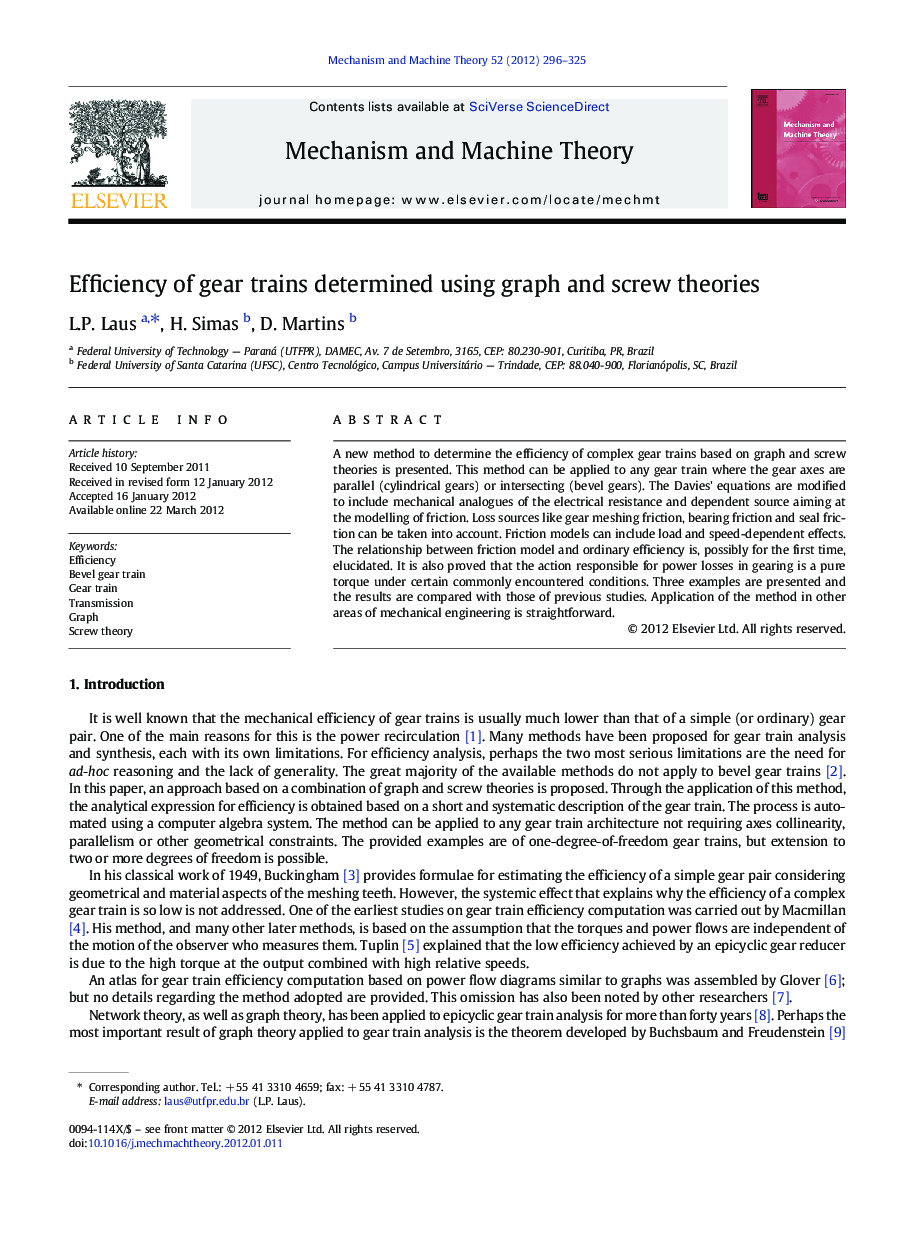| Article ID | Journal | Published Year | Pages | File Type |
|---|---|---|---|---|
| 803221 | Mechanism and Machine Theory | 2012 | 30 Pages |
A new method to determine the efficiency of complex gear trains based on graph and screw theories is presented. This method can be applied to any gear train where the gear axes are parallel (cylindrical gears) or intersecting (bevel gears). The Davies' equations are modified to include mechanical analogues of the electrical resistance and dependent source aiming at the modelling of friction. Loss sources like gear meshing friction, bearing friction and seal friction can be taken into account. Friction models can include load and speed-dependent effects. The relationship between friction model and ordinary efficiency is, possibly for the first time, elucidated. It is also proved that the action responsible for power losses in gearing is a pure torque under certain commonly encountered conditions. Three examples are presented and the results are compared with those of previous studies. Application of the method in other areas of mechanical engineering is straightforward.
Graphical abstractFigure optionsDownload full-size imageDownload as PowerPoint slideHighlights► Paper proposes a new generic method to determine the efficiency of complex gear trains. ► The approach combines graph and screw theories. ► Examples of application to spur and bevel gear trains are provided. ► Loss sources like gear meshing, bearing and seal friction can be included. ► A novel equation for Humpage bevel gears train efficiency is proposed.
